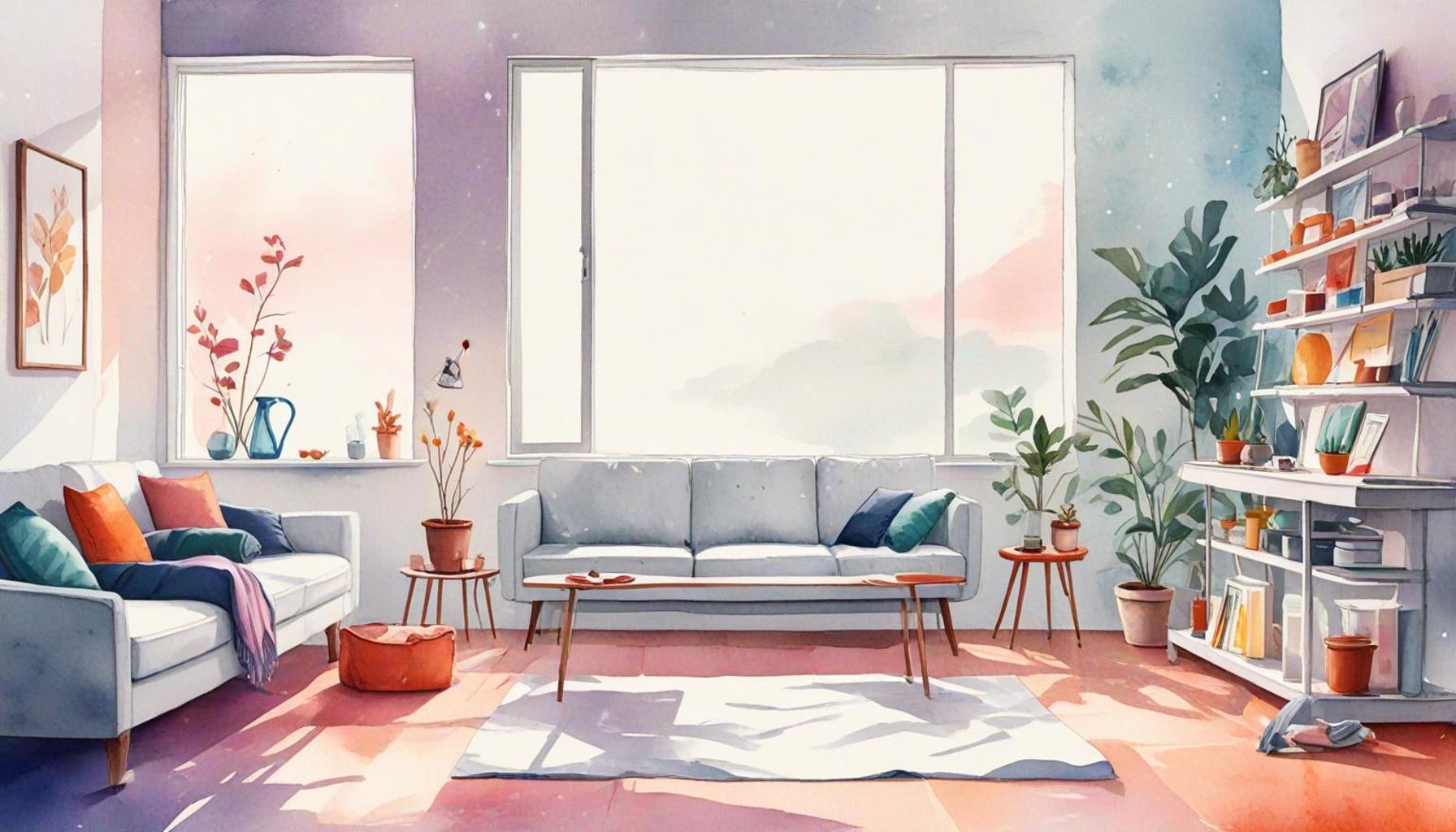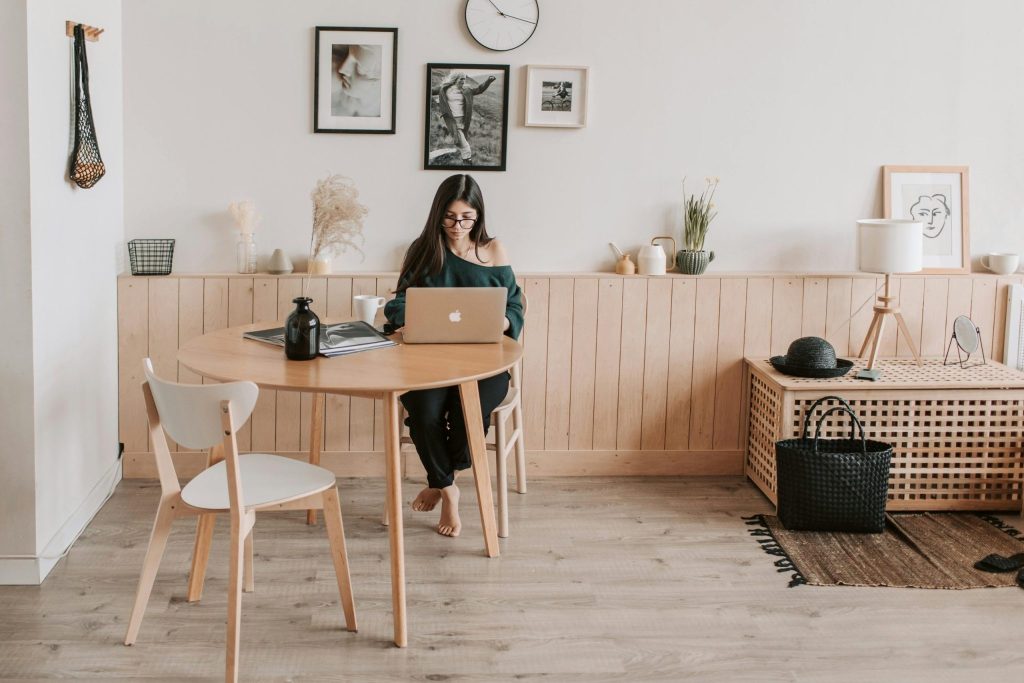Discover the Role of Intention in Designing a Minimalist Space

The Essence of Intention in Minimalist Design
In a world overflowing with distractions and possessions, the concept of minimalism emerges as a powerful antidote. Intentionality in our spaces can transform not just our environment, but also our mindset and well-being. Understanding the role of intention in designing a minimalist space is essential for those seeking clarity and focus in their lives.
This article will delve into the significance of approaching minimalism with a clear purpose, examining how conscious choices contribute to a serene and functional atmosphere. Key insights include the following:
- Defining your personal values and needs
- Understanding how intention impacts functionality
- Recognizing the relationship between intention and decluttering
- Exploring the psychological benefits of an intentional space
- Implementing practical strategies for a minimalist environment
Prepare to explore the Top 5 ways to harness intention effectively as you embark on your journey toward a beautifully curated minimalist space.
DIVE DEEPER: Click here to discover minimalist tips for home organization
The Importance of Intention in Creating a Minimalist Space
In the realm of home design, minimalism often stands out as more than just a style—it’s a way of life. At the heart of crafting a minimalist space lies the central theme of intention. This intention serves as a compass, guiding individuals to ponder what truly matters and encouraging the embrace of simplicity. As we delve into the significance of intention, let us explore the top five fundamental aspects that shape a minimalist environment. We’ll unravel the significance of these aspects from the fifth to the first as we embark on this insightful journey of decluttering.

5. Encouraging Mindfulness
One of the initial steps in establishing a minimalist space is to foster a sense of mindfulness. Through intentionality, individuals can enhance their awareness of their surroundings and the items that populate their home. Mindfulness urges a more contemplative approach to acquiring and organizing belongings. It provokes introspective questioning such as:
- Does this item serve a purpose?
- How does it make me feel?
- Does this truly reflect my values?
This process not only aids in decluttering physical spaces but also paves the way for recognizing the benefits of a consciously curated lifestyle. By prioritizing mindfulness, one lays the groundwork for impactful changes in their living environment. Consider how this approach encourages us to detach from materialism, emphasizing experiences over possessions. For instance, rather than a shelf full of unread books, perhaps only those that evoke joy or ignite inspiration deserve space, thereby creating room for substance over quantity.
4. Defining Your Values
A vital facet of intention in cultivating a minimalist environment is the emphasis on defining your values. It is a clarifying process that helps individuals distill what genuinely matters to them. This clarity serves as an anchor when it comes time to make decisions regarding what to keep and what to part with. With an understanding of personal values, one can curate a space that visibly echoes their beliefs, interests, and goals. Some illustrative examples of potential central values include:
- Sustainability
- Family
- Creativity
- Personal Growth
By allowing your environment to resonate with your core values, maintaining a minimalist space is not only aesthetically pleasing but also deeply fulfilling on a personal level. Imagine a workspace that’s uncluttered, defined by a commitment to sustainability, featuring upcycled furniture and decor, thereby narrating a story of environmental consciousness.
3. Simplifying Decision-Making
A significant benefit of having clear intentions and well-defined values is the ease brought to decision-making. By eliminating the extraneous noise of unnecessary options, intention simplifies decluttering and organizing. When deliberating on belongings or decor, a solid guiding intention acts as a beacon for swift and effective choices. Questions to ponder may include:
- Does it add value to my life?
- Am I retaining this out of mere obligation?
- Will it contribute to a peaceful environment?
This streamlined decision-making process nurtures the ability to embrace an organized, minimalist lifestyle. As the clutter reduces, clarity escalates. It paves the way for a free flow of energy throughout the space, inviting creativity and calmness, which are often obscured by chaos.
2. Enhancing Aesthetic Appeal
Intention extends beyond mere functionality and plays a pivotal role in enhancing aesthetic appeal. An intentional approach imbues a minimalist space with harmony and balance. Deliberate choices concerning color palettes, textures, and decor elements create a cohesive and tranquil atmosphere. Potential ideas include:
- Choosing a limited color palette to promote serenity.
- Selecting textures that evoke comfort.
- Incorporating art that ignites inspiration.
The result of mindful intention is an environment where the essence of minimalism aligns with elegance and simplicity. For example, the soothing tones of whites and greys interspersed with natural textures can transform a room into a serene sanctuary, encouraging restful energy and relaxation.
1. Cultivating a Sense of Purpose
The crowning aspect of intention in creating a minimalist space is its ability to cultivate a sense of purpose. When individuals approach their living areas with overarching goals—such as fostering tranquility, creativity, or connection—they morph these spaces into meaningful reflections of intentional living. Purposeful spaces transcend their physicality to embody personal intentions. Such environments provide:
- Promotion of well-being and mental clarity.
- Encouragement of personal growth.
- Enhancement of relationships with family and friends.
Spaces imbued with purpose enrich lives by providing a more meaningful, fulfilling experience during the journey toward minimalism. Imagine a living room designed to encourage family interactions through comfortable seating and open layouts, fostering community and connection amidst the simplicity.
In conclusion, embracing intention is key to unlocking the potential of a minimalist space. As you reflect on creating an environment aligned with your values and purposes, remember to exercise patience and mindfulness. Each intentional step builds upon the journey to a fulfilling, minimalistic lifestyle—one that advocates for quality over quantity, impacts personal well-being, and creates a peaceful retreat from the chaos of the outside world.
| Category | Details |
|---|---|
| Clarity of Purpose | Establishing a minimalistic space requires a clear understanding of your goals for the area, allowing for a design that enhances functionality. |
| Emotional Well-being | A minimalistic approach can significantly improve mental clarity by reducing clutter, leading to a more serene and calming environment. |
| Intentional Design Choices | Choosing materials and colors with intention allows individuals to create a space that resonates with their personal values and aesthetic preferences. |
| Mindful Consumption | Adopting a minimalistic lifestyle encourages thoughtful purchasing behaviors, emphasizing quality over quantity and fostering sustainability. |
The essence of minimalism lies in its ability to reflect one’s true intentions and desires. By creating a space that embodies clarity of purpose, individuals are empowered to focus on what truly matters. Minimalist environments not only foster physical organization but also cultivate emotional well-being, allowing for a tranquil mindset amidst the chaos of daily life. Moreover, intentional design choices play a crucial role in enhancing the overall ambiance of a space. The selection of each piece, from furniture to décor, becomes a conscious act that helps express personal identity. It’s about embracing simplicity while making a statement that aligns with one’s values.Mindful consumption is another significant aspect of minimalism. The philosophy encourages individuals to critically assess their possessions and make informed decisions about what to bring into their homes. This shift towards a more intentional lifestyle promotes a sense of responsibility towards the environment and fosters a deeper appreciation for the things that truly enhance our lives. Through this lens, minimalism transcends mere aesthetics; it becomes a path towards holistic living.
DISCOVER MORE: Click here for essential tips
Frequently Asked Questions about Intentional Minimalist Spaces
What does having an intention mean when creating a minimalist space?
Having an intention while creating a minimalist space refers to the conscious decision-making process that guides the selection and organization of items within the space. It involves questioning the purpose of each object and ensuring that it aligns with the overall vision for a clutter-free environment. This process is crucial because it influences not only the physical aesthetics of the space but also its functional and emotional aspects, fostering a more meaningful connection between the inhabitant and their environment.
How can one identify their intentions for a minimalist space?
Identifying intentions for a minimalist space is a personal journey that requires introspection. Begin by asking yourself what you want to achieve with the space—whether it’s tranquility, focus, or freedom from clutter. Consider the activities that will take place there and the feelings you wish to evoke. Journaling or mood boards can be helpful tools in crystallizing these thoughts. By understanding why you desire minimalism, you can make decisions that truly resonate with your lifestyle and values.
Why is minimalism more than just reducing the number of items in a space?
Minimalism extends beyond simply owning fewer items; it’s about creating a space that serves your needs and supports your well-being. Intentional choices determine what stays and what goes, ensuring that each element contributes positively to your life. This approach can lead to increased focus, reduced stress, and an enhanced appreciation for the simplicity and functionality of the space.
Can minimalism impact mental health, and if so, how?
Yes, minimalism can significantly impact mental health. A well-curated, intentional space can reduce stress and anxiety levels, as clutter is often associated with chaos and distractions. By having a clear, organized environment, you create a setting that fosters peace and concentration. The process of decluttering itself can also be therapeutic, offering a sense of accomplishment and control. Studies suggest that living in a minimalist space may promote a more peaceful, focused state of mind.
DIVE DEEPER: Click here for valuable minimalist organization tips
Conclusion
In the exploration of minimalism and personal organization, the role of intention cannot be overstated. As we have journeyed through the nuances of crafting a minimalist space, it becomes clear that intent is the invisible thread that weaves every element of the environment into a cohesive tapestry. By focusing on what truly matters, individuals can curate spaces that not only reflect personal values but also enhance well-being and clarity.
Intention serves as the guiding compass in navigating the complexities of our material world. It encourages thoughtful decision-making, urging one to pause and consider the purpose and necessity of each item. This deliberate approach not only reduces clutter but also fosters a deeper connection with one’s surroundings. In essence, a minimalist space is not merely about the absence of excess but the presence of selected, meaningful elements that inspire serenity and focus.
The principles discussed in the article—such as mindful curation and intentional living—are foundational pillars of minimalism. By applying these principles, individuals can transform their spaces into havens of simplicity and tranquility. Furthermore, adopting an intentional mindset can have broader implications, impacting one’s lifestyle and overall sense of satisfaction.
In conclusion, the importance of intention in creating a minimalist space extends beyond aesthetics; it is a pathway to a more organized and fulfilling life. For those embarking on this journey, remember that every choice carries the potential to shape not just your surroundings, but your experience within them. As you continue to explore the minimalist philosophy, consider the profound impact of your intentions—because it’s in these thoughtful considerations that true transformation lies.

Linda Carter is a writer and organization expert specializing in minimalism and personal organization. With extensive experience helping individuals create clutter-free, functional spaces and adopt mindful habits, Linda shares her knowledge on our platform. Her goal is to empower readers with practical advice and strategies to simplify their lives, stay organized, and achieve a sense of calm and balance in their daily routines.